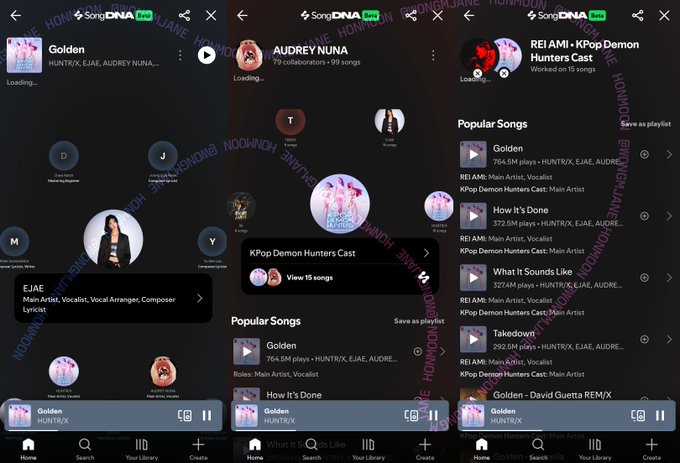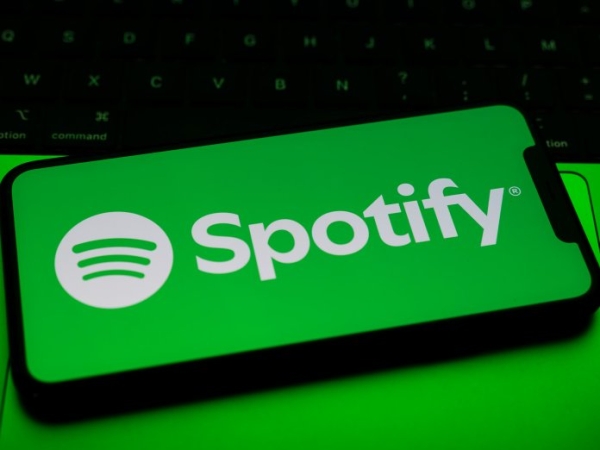Spotify’s “SongDNA”: A New Era of Music Discovery Through Credits
In a world where music streaming is dominated by algorithms, playlists, and endless recommendations, Spotify seems to be taking a fresh, human-centric approach. Recently, tech insiders discovered that Spotify is developing a new feature called “SongDNA.” This potential update could change how listeners discover music — not just by sound or genre, but by the people behind the songs.
Although the company hasn’t officially announced it yet, clues buried in Spotify’s app code hint at an exciting new direction for music discovery — one that highlights the unsung heroes of every track: the writers, producers, and engineers who make the magic happen.
What Is SongDNA?
SongDNA appears to be a feature in development that will give users the ability to explore music through its credits. Instead of focusing purely on the artist or the song’s title, Spotify’s new approach aims to let users dive into the DNA of a track — the creative contributors who shaped it.
This discovery came from Jane Manchun Wong, a well-known app researcher who frequently uncovers unreleased features in popular apps. Wong found references to “SongDNA” inside Spotify’s code, along with screenshots of what appears to be a new interface that lists each contributor on a track and connects their work across other songs.
For example, if you were listening to a song produced by Mark Ronson, SongDNA might let you tap his name to see all the tracks he’s ever produced — across artists, genres, and eras. Imagine discovering connections between your favorite songs and realizing they share the same songwriter, engineer, or session musician. That’s the kind of experience SongDNA could deliver.
A Shift from Algorithms to Humans
For years, Spotify’s success has been driven by its algorithmic curation — playlists like Discover Weekly or Release Radar use data and behavior patterns to serve you the next best track. But SongDNA hints at a more organic and human discovery path, one rooted in creativity, connection, and collaboration.
It represents a philosophical shift. Music discovery has long been about what you like. SongDNA introduces the idea of who you like — the creative fingerprints behind your taste. Instead of browsing by genre, you could browse by creator network.
This approach could redefine how fans think about their favorite songs. Many listeners don’t realize that some of today’s biggest pop hits were written or produced by the same handful of creative masterminds. For example, Max Martin has written dozens of chart-topping hits for Britney Spears, The Weeknd, Taylor Swift, and Katy Perry. SongDNA could make those invisible connections instantly visible — revealing the invisible threads that tie the music industry together.

Why This Matters for Artists and Producers
The potential benefits of SongDNA go far beyond fans. For songwriters, producers, and engineers, this could be a game-changer.
One of the biggest frustrations in the modern music industry is the lack of visibility for the people who work behind the scenes. While major artists get the spotlight, songwriters and producers often remain anonymous to the average listener — even though their contributions shape the sound of entire generations.
SongDNA could finally bridge that gap. By integrating credits directly into the discovery experience, Spotify would give recognition where it’s due — making it easier for industry professionals to build a public portfolio within the world’s largest streaming platform.
This transparency could also create new networking opportunities. A producer might find a new vocalist to collaborate with. A songwriter could discover others who share a similar creative style. Even music fans could use this feature to better understand the craftsmanship behind their favorite hits.
How SongDNA Could Work
While Spotify hasn’t confirmed any details, leaks suggest that SongDNA might include:
-
A detailed credit breakdown: listing every person involved in the song’s creation — from writers and producers to mixers and mastering engineers.
-
Clickable profiles: allowing users to tap a contributor’s name to see all the other songs they’ve worked on.
-
Connected discovery: recommendations based on shared contributors rather than listening habits — e.g., “Other tracks produced by Metro Boomin.”
-
Interactive visual design: perhaps showcasing “creative webs” connecting different artists and their teams.
Essentially, Spotify could evolve into an IMDB for music — a place where you can trace every creative connection in the industry.
The Competition: Tidal and Beyond
Spotify isn’t the first streaming platform to explore song credits. Tidal, for example, has long championed detailed credit listings, allowing users to view who contributed to a track. However, SongDNA seems to go beyond simple listings — it’s designed to make those credits discoverable.
Instead of credits being buried in a menu, they could become the foundation for new recommendations. This would give Spotify a fresh discovery edge — a more narrative, human layer to its data-driven ecosystem.
It also aligns with a broader industry trend: recognizing creators. From TikTok tagging original sound creators to YouTube’s music metadata updates, platforms are realizing the importance of crediting every contributor. SongDNA fits perfectly into this cultural moment.
Challenges Spotify May Face
As exciting as SongDNA sounds, it won’t be easy to implement. There are a few major hurdles Spotify must overcome:
-
Incomplete metadata – Many songs, especially older ones or indie releases, lack accurate or complete credit data. This could make the feature inconsistent at first.
-
Licensing and data integration – Spotify may need to partner with publishers, PROs, and metadata providers to gather and verify this information.
-
User interface complexity – Displaying all this data clearly and attractively will require careful UX design to avoid overwhelming users.
-
Adoption and awareness – Listeners need to care about credits. While hardcore music fans will love this, casual users may not explore it unless Spotify promotes it effectively.
If the company pulls it off, however, SongDNA could become one of Spotify’s most valuable discovery tools in years.
The Bigger Picture: Rediscovering the Human Side of Music
In a time when AI and automation dominate the headlines, SongDNA feels refreshingly human. It reminds us that music is not just content; it’s a collaboration — a product of emotion, creativity, and teamwork.
By surfacing the people behind the songs, Spotify could spark a cultural shift: encouraging fans to value who made the music as much as who performed it. For upcoming artists, that visibility could translate into recognition, respect, and new opportunities.
If Spotify launches SongDNA, it could redefine how the next generation interacts with music — not just consuming it, but exploring its creative lineage.
Final Thoughts
At the moment, SongDNA remains in development, and Spotify has yet to make an official statement. However, the discovery of this feature in Spotify’s app code — confirmed by multiple sources like TechCrunch and Digital Trends — indicates that the company is serious about exploring this direction.
Whether it launches next month or next year, one thing is clear: Spotify wants to make music discovery more personal, more connected, and more human.
If SongDNA becomes a reality, it could mark the next great evolution in streaming — turning every play into a journey through the creative universe of the artists, writers, and producers who make music come alive.


